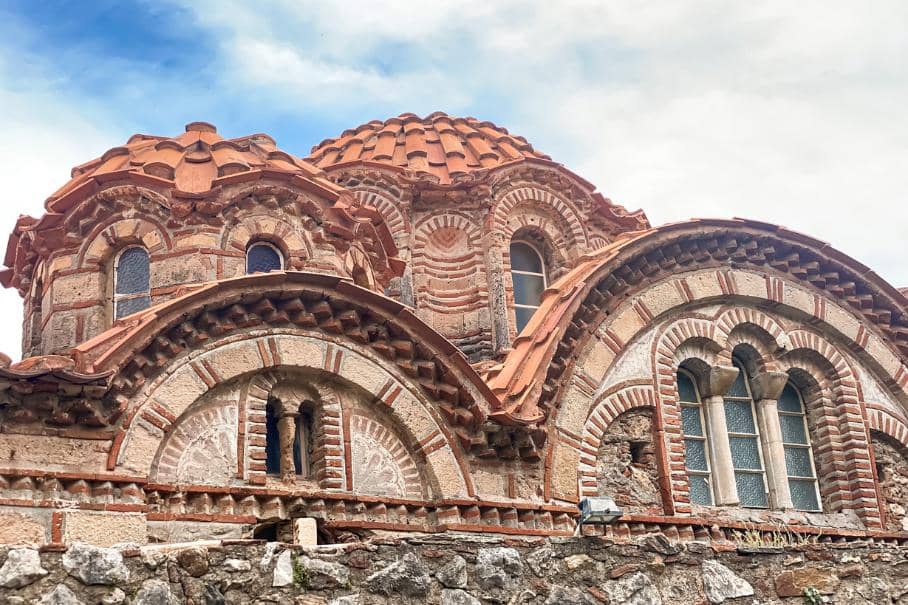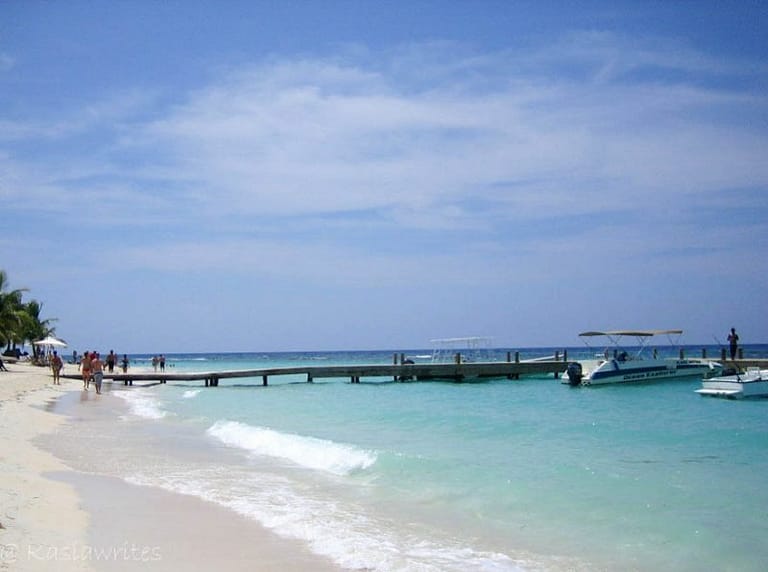Discover Mystras Greece: The Forgotten Byzantine Powerhouse
When you think of Greece, you might envision philosophers in white togas or mythical gods that live on Mount Olympus. Or, you might think of great food, a fantastic party vibe, and stunning islands with white homes and blue trim. However, it is often forgotten that Greece was also part of the Byzantine Empire, one of the most powerful empires in history, with Mystras as its centre.
Overlooking the picturesque countryside, with the modern-day town of Sparta (yes, of the 300 fame) in the distance, is the incredible site of Mystras. Often described as the wonder of Morea (the name of the Peloponnese region during the Middle Ages), this once-prosperous town is a must-visit for anyone looking to dive deeper into Greek history.

When I got an opportunity to explore Greece’s Byzantine powerhouse, I knew I couldn’t say no. After all, I haven’t met ruins I didn’t like. Here is why you should visit this part of the Peloponnese region of Greece for yourself.
A Brief History of Mystras
As this is Greece, the area’s history goes back to the Neolithic times. Over time, the Myceneans and the Minoans lived here, and sometime during the 10th century BC, the region came under Sparta’s control. The Romans eventually made their way here. Following the Fourth Crusade, the area came under the control of the Franks.
It was in 1249 that William II Villehardouin, a Frankish ruler of the Principality of Achaea, founded the site of Mystras that we know today. Its strategic location on Mount Taygetus made the fortress a significant administrative for the Franks, who ruled this area in those days. A few decades later, the Byzantines took power, and Mystras quickly became a political, cultural and religious center.
The city flourished as a cultural centre under Byzantine power. During its heyday in the 14th and 15th centuries, it was home to around 40,000 inhabitants. It was considered one of the most important cities in Greece. However, after being conquered by the Ottoman Empire in 1460, Mystras began to decline and was eventually abandoned in the early 19th century.
Archaeological Site of Mystras
The site is quite beautiful, especially if you visit in the spring like I did, as the hill is covered with fragrant, blooming flowers. Today, it’s hard to imagine this seemingly small town on a remote mountain as a thriving metropolis filled with people. Not much is left of the defensive walls and the dwellings that once stood here, however, there are other things to check out.

The Castle of Mystras
For the best views, climb to the very top. Here, you’ll find remnants of the oldest part of the settlement. While very few actual walls remain, you can get an idea of how big the fortress once was based on what’s left today. It was fun to spot the differences in building techniques used in construction here versus what I’m used to seeing in Italy. Romans were famous for their engineering, so it’s easy to tell their style apart from other cultures once you know what to look for. Still, the fact that there are remnants to see here also speaks to the quality of the builders, which must have been quite the feat to bring all this material up the hill.
The Palace of the Despots
Lower on the hill, you’ll find the large palace of the despots, dating back to Byzantine rule. This was the home of the governor and the centre of power, second to the one in Constantinople. Again, it seems strange that this place, high in the mountains, surrounded by countryside, would hold such power. Then again, I wasn’t around back then, so to someone living a few centuries earlier, it might have made perfect sense.

The complex was under renovation during my visit, so I didn’t get a chance to go inside. Apparently, the construction was almost complete, so hopefully, the buildings reopen to visitors. Still, even from the outside, it looks impressive and worth checking out.
Byzantine churches and monasteries
There are quite a few churches and monasteries on the site. In some, you can even still see Byzantine frescoes. Some more notable include the Church of Hagia Sophia, the Cathedral of Saint Demetrius, the Convent of Pantanassa, and the Church of the Peribleptos.
These iconic-looking churches are remarkably well-preserved and probably the best-preserved structures here. I was able to go inside and check out one of them during my visit. While I’m not into religious sites, it was still an excellent opportunity to see how they were built.
Practical tips for visiting
- The site is open to visitors from 8:00 am to 8:00 pm during the summer months (April to October), and from 8:00 am to 5:00 pm in the winter months (November to March).
- Admission is set at €12 for adults, with a reduced fee of €6 for students and seniors. Admission is free for children under the age of 18.
- The best time to visit is in the spring or early autumn, when the weather is mild, and the site is less crowded, providing a more tranquil experience amidst the ruins and frescoes.
Pro tip: The site and the paths are pretty rocky, so bring comfortable footwear. Consider bringing sunscreen and water, as exploring the ruins involves a fair amount of walking, often on uneven terrain.
Where to stay
There is a good selection of places to stay in the modern-day town or nearby Sparti, where you can also check out the archaeological site of Sparta. If you plan on coming to Mystras as a day trip, you can stay in Kalamata, Nafplio or Epidaurus.
Where to eat
There are many great restaurants in the area, and the one we stopped at was the Chromata restaurant. The views were great and the food even better. While I love Greek food, this was on a different level. My absolute favourite dish was the Messinian talagani cheese, which I can compare to halloumi cheese in consistency. It was fried and coated in almond flakes with a side of homemade bergamot cream. Everything here was good, but this dish was epic in the most literal sense of the word.
Mystras Greece – Should you visit?
The short answer is absolutely. Archeological sites and any type of ruins are a great way to learn about the cultural past of any country. They are even more interesting in Greece as there are many different sides to the country’s history. Yes, Greece was the birthplace of democracy. It’s a country that gave us myths, legends, and incredible food. However, it’s easy to forget that for a few centuries, it was part of other empires, including the Byzantine and then the Ottoman, before gaining independence.
While Mystras is a popular tourist destination, you’re not going to be overrun by tourists. There is enough space to enjoy the place and enjoy the views. I’ve said it already, but the views here are incredible. It’s a stunning location, and on a sunny, warm day, you can sit here and imagine what life was like here a few hundred years ago. I recommend stopping here to learn more about this once magnificent and influential place. You won’t regret it!
NOTE: My visit was part of a press trip that was hosted by the Mythical Peloponnese in collaboration with Tbex. As always, all opinions are my own.














